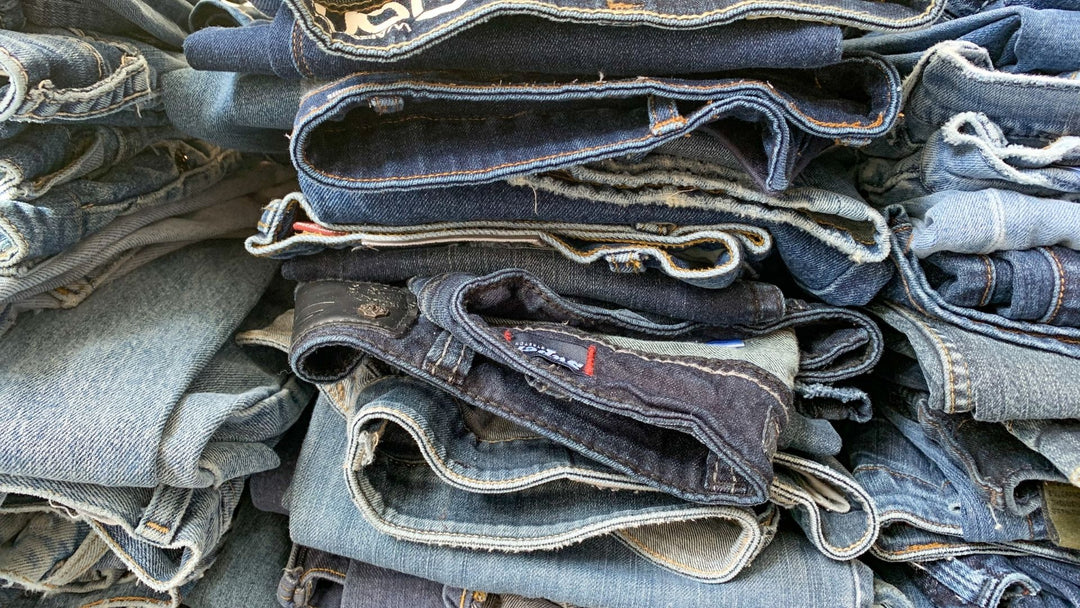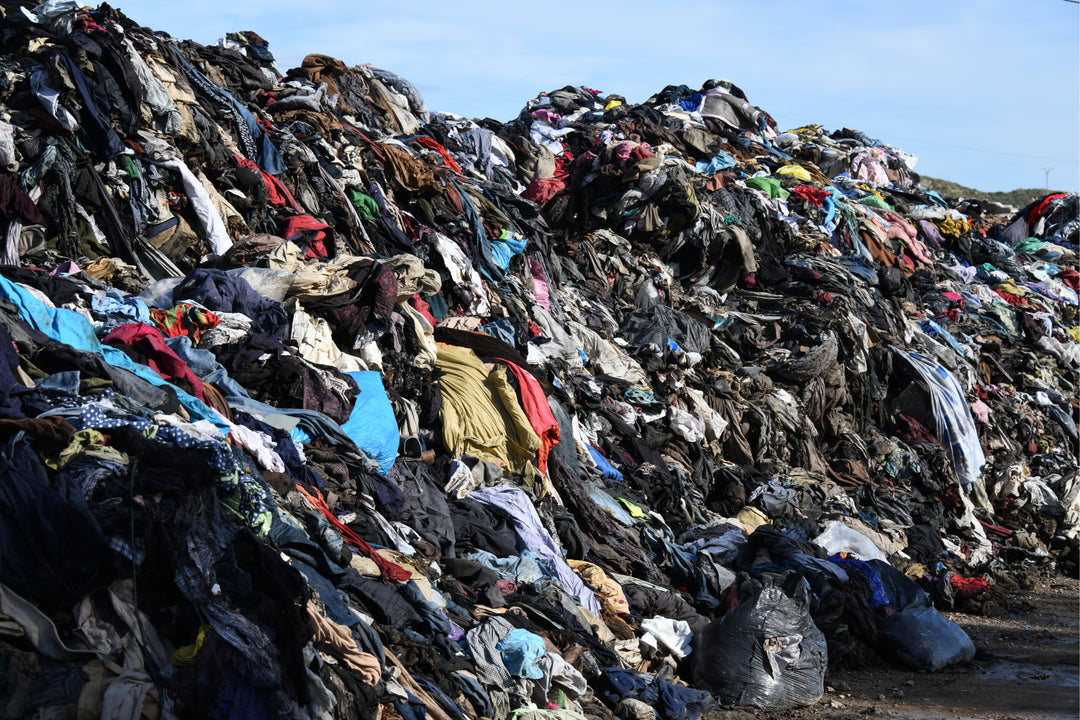Making Your Jeans Last: Preventing Rippling
Working with upcycled denim, I see many of the same damage issues on jeans. While one of the best things you can do to reduce the impact your clothing has on the environment is to wear the clothes you already have as much as you can, this can be challenging when your clothes do not last as long as you would like. A common issue that sends jeans to the garbage is rippling.
What Causes Rippling?
Denim is a woven fabric. Woven fabrics are not naturally very stretchy, so small amounts of spandex* are incorporated into the weave's horizontal yarns (weft yarns) to create the stretch. Rippling damage only happens with stretch jeans and is caused by the spandex in the fibre. Rippling doesn't happen with 100% cotton denim.

Because the ripple usually appears on high-stress areas, like the upper thigh, people often assume it is caused by strain on the fabric, but it is actually caused by improper care.
Spandex is a strong fibre with good retractive properties, but it is susceptible to heat. Harsh detergents and hot water/heat damage the spandex in the fibre. Once the fibre is damaged, the elastic fails to contract when stretched, creating ripples.
Preventing Ripples:
To prevent the ripples, read and follow the care instructions on the label of the jeans. Wash in low temperatures with a mild detergent and hang to dry. Look for jeans with 2% or less spandex since more stretch lowers the denim's sturdiness.
Another Reason to Make Your Jeans Last:
Taking good care of your stretch jeans doesn't just mean they will look better on you; it lowers their impact on the earth. Spandex is not considered sustainable; it is a synthetic fibre made from a non-renewable resource (fossil fuels) with an energy-intensive manufacturing process that creates pollution. Since it is essentially plastic, it is entirely non-biodegradable at the end of life.
Materials containing spandex are also notoriously tricky to recycle using mechanical recycling techniques because the spandex stretches through the machines and causes blockages and clumping.
*Spandex, elastane and Lycra are all essentially the same fibre




